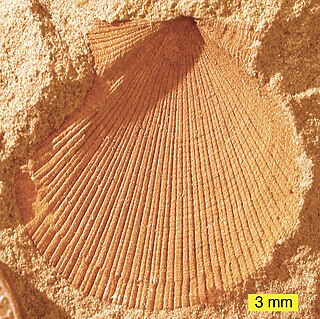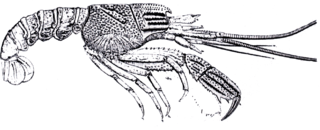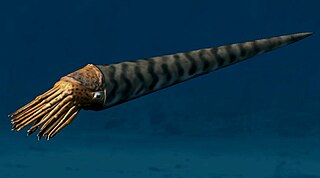 W
WAviculopecten is an extinct genus of bivalve mollusc that lived from the Early Devonian to the Late Triassic in Asia, Australia, Europe, North America, and South America.
 W
WGlyphea is a genus of fossil glypheoid crustaceans that lived from the Jurassic to the Eocene. It includes the following species:
 W
WMegalocephalus is an extinct genus of baphetid amphibian from the late Carboniferous of the British Isles. It contains two species, M. pachycephalus and M. lineolatus.
 W
WNeithea is an extinct genus of bivalve molluscs that lived from the Early Jurassic to the early Paleocene, with a worldwide distribution. Neithia sp. are inequivalve. That means that the two valves are not the same shape, the right valve being strongly concave and the left valve being flattened or concave. Sculpture consist of alternating strong and weaker radiating ribs.
 W
WOxytoma is an extinct genus of bivalve molluscs that lived from the Late Permian to the early Paleocene, with a worldwide distribution except Australia. The genus was named in 1864 by Fielding Bradford Meek.
 W
WParaphragmitidae is an extinct family of actively mobile aquatic carnivorous cephalopods belonging to the subclass Orthoceratoidea endemic to what would be Asia and Europe during the Silurian living from 436—418.7 mya, existing for approximately 17.3 million years.
 W
WPhymosoma is an extinct genus of echinoids that lived from the Cretaceous to the Eocene. Its remains have been found in Asia, Europe, and North America.
 W
WTerebratula is a modern genus of brachiopods with a fossil record dating back to the Late Devonian. These brachiopods are stationary epifaunal suspension feeders and have a worldwide distribution.
 W
WVolutospina is an extinct genus of fossil gastropod that lived from the Cretaceous to the Eocene in Africa, Asia, Europe, and North America.